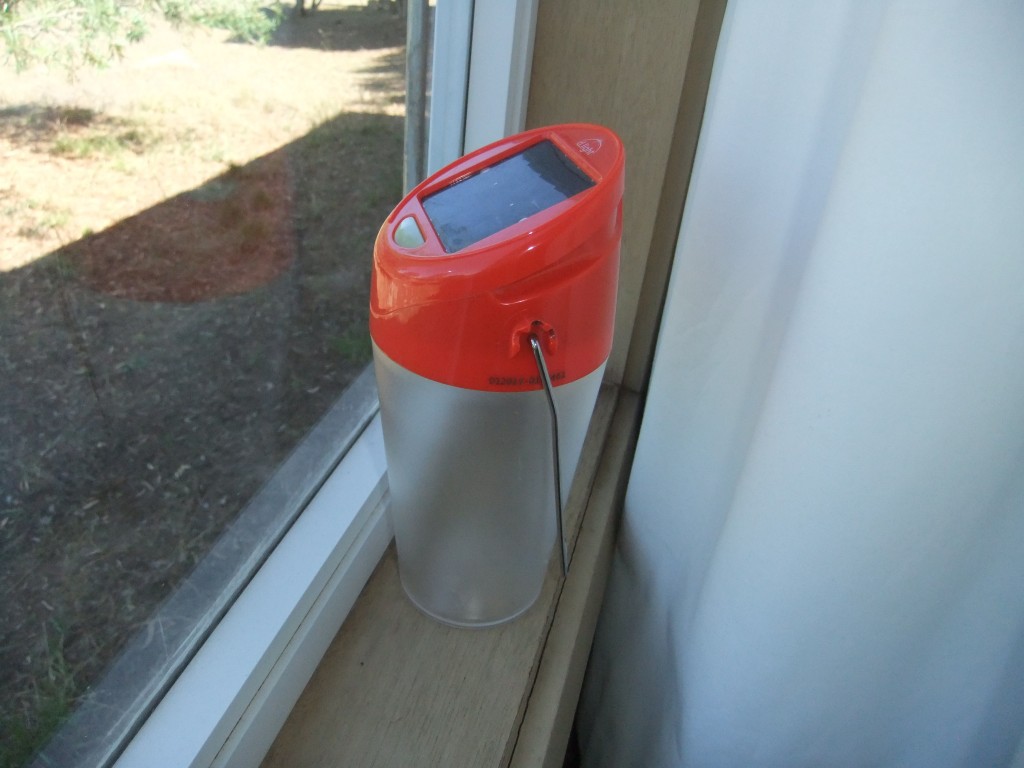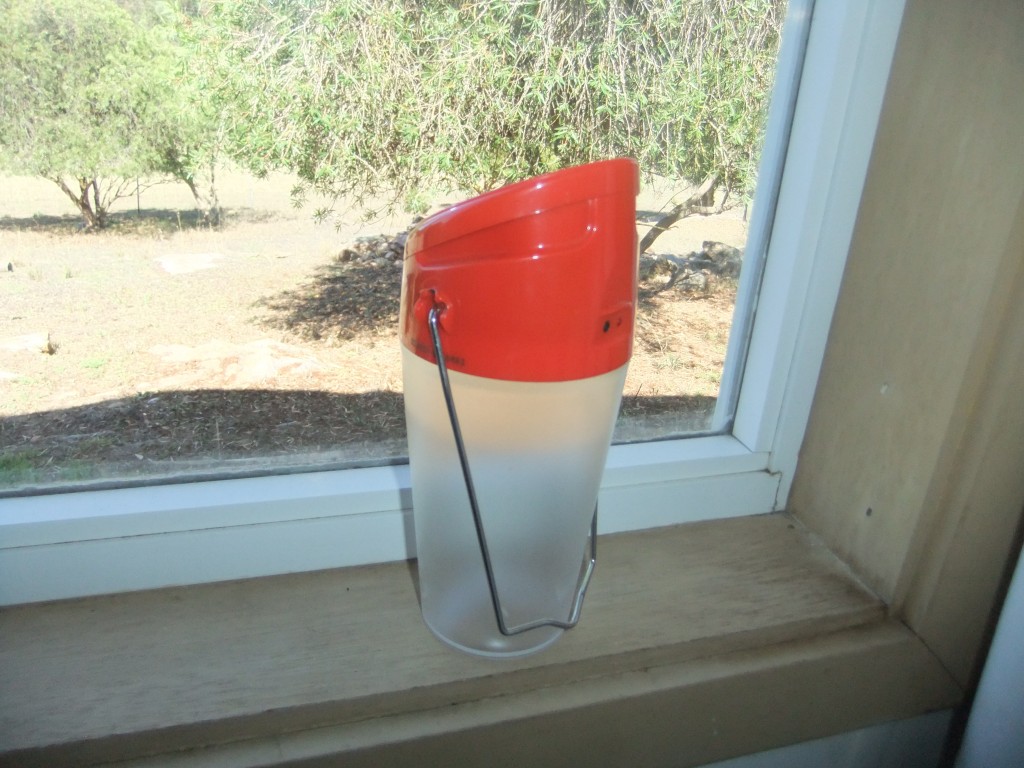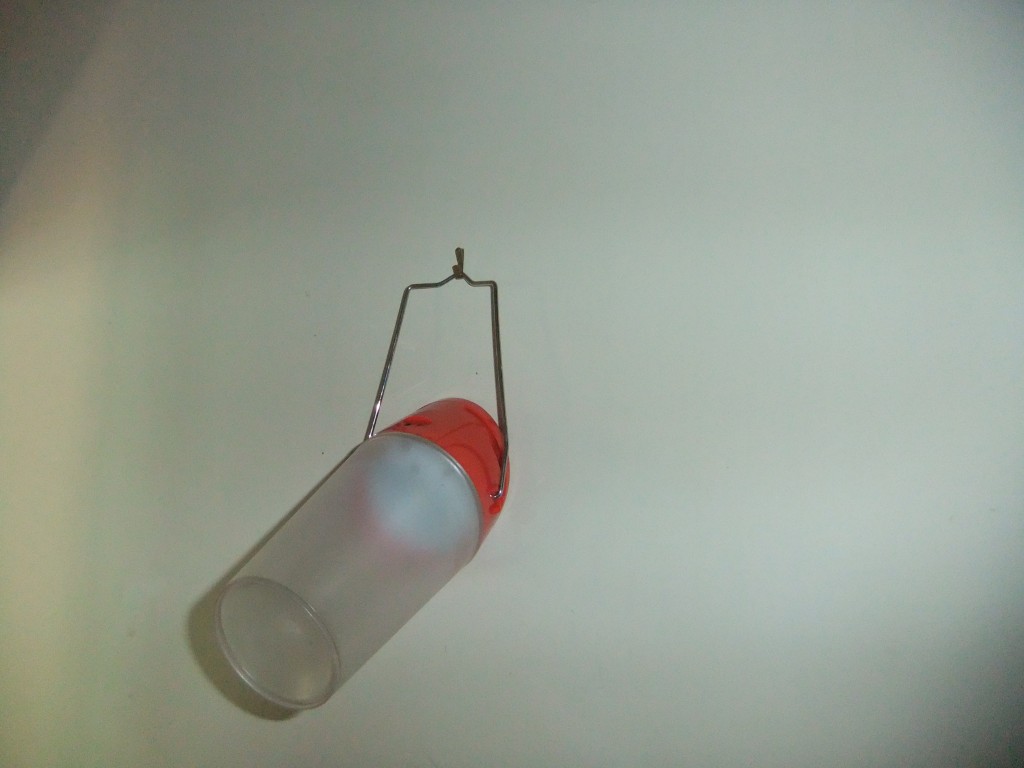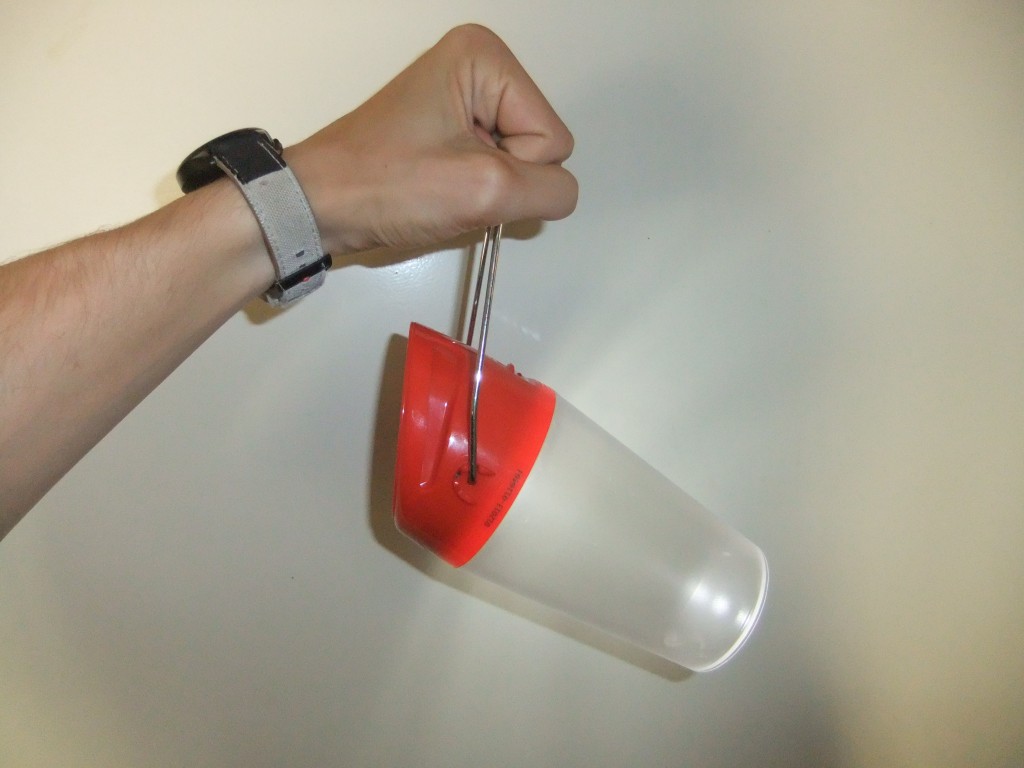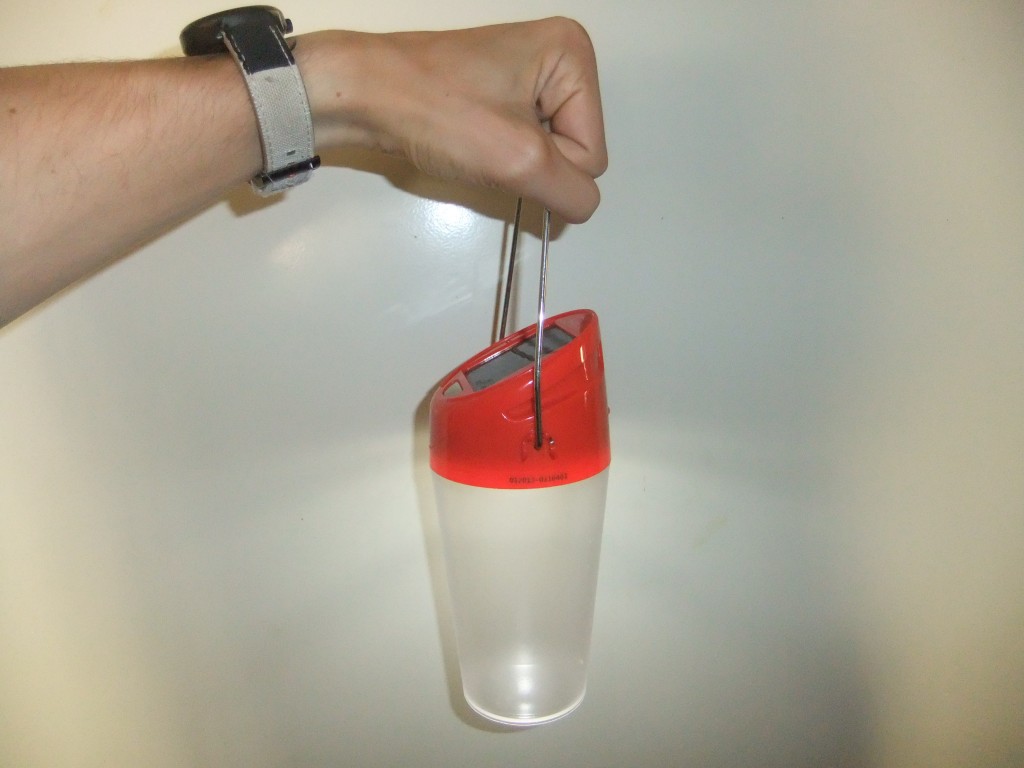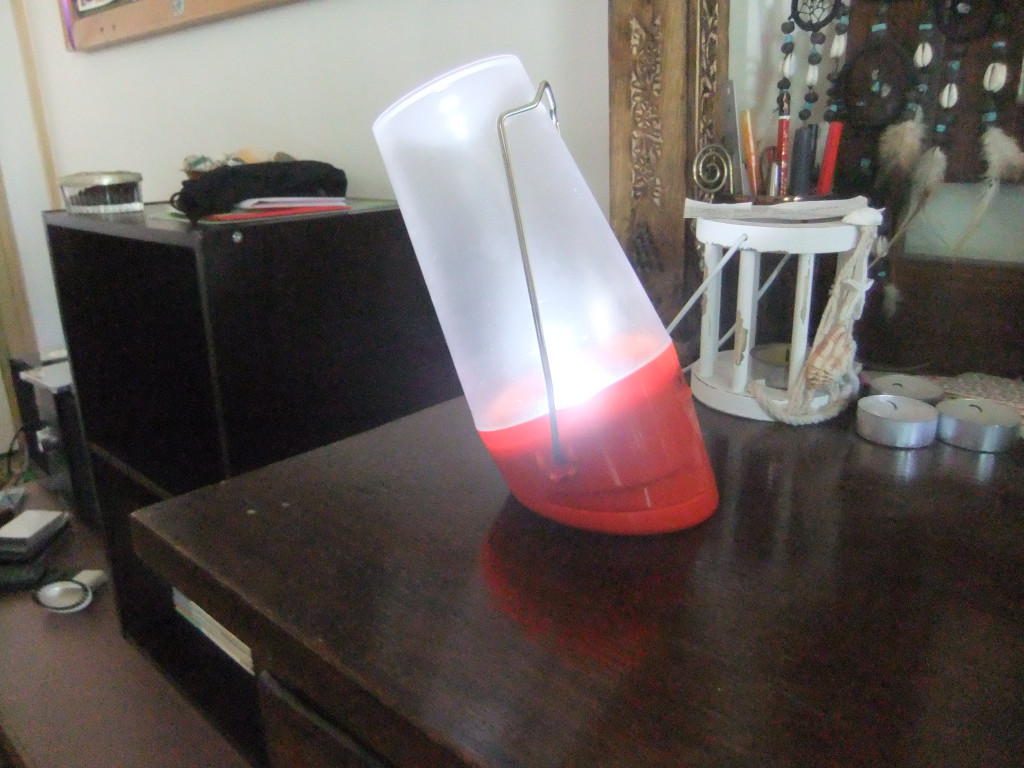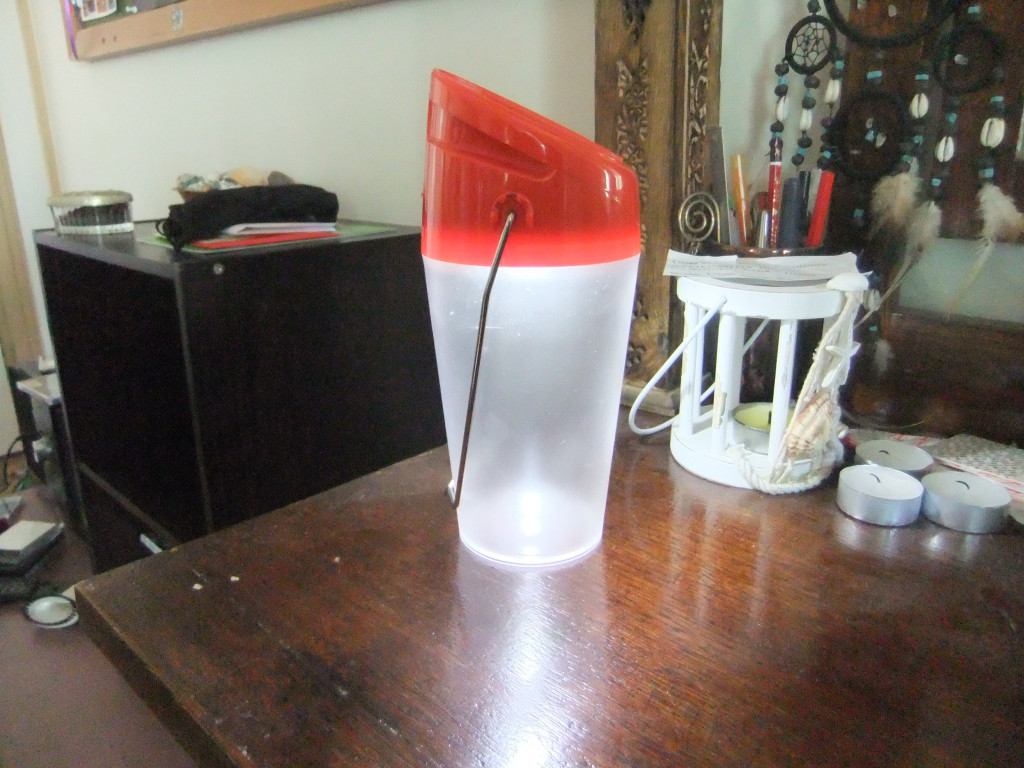 |
| Fairy garden/forest, a year and a half later (see update at bottom of post) |
This is a quick, simple, and generalised step-by-step guide with photos on how to create your own fairy garden amongst a proper (if a little small) raised garden bed containing a few useful plants. The intention is that this can be followed step-by-step as-is, or be used as a “jumping off point” for creating a raised fairy garden bed using (possibly vastly) different materials.
Choosing a Spot
 |
| Our chosen spot for the fairy garden. |
A few of the items we put (and will be putting in future) in the fairy garden are fragile, and if the ducks wandered through this garden bed on their search for tasty snails and insects, they may accidentally break some of the items.
Of course, they may decide the vegetables in our vegie gardens are too good to pass up, too. As such, we already have plans to fence off the area around the vegie garden before letting the ducks roam free. Due to this, we decided to put the new garden bed in the area which will eventually become fenced-off, and hence become safe from webbed feet.
After this decision, we still had to decide where to place the new garden bed in the area which would become fenced off. We ended up deciding that the garden bed can sit against an old wattle tree to act as its fourth wall, and for added ambiance.
To generalise, choosing a spot should be a matter of finding somewhere not too far from the house (so you can enjoy it easily), and if applicable, somewhere pets are unlikely to find themselves amongst the garden bed if there are fragile items being used for decoration.
What You'll Need
As mentioned at the
beginning of this guide, this is intended to be a general guide,
including a broad method for how we created our particular garden bed.
So I won’t be giving exact numbers and measurements, just the materials
you’ll need in general, and the materials we used as a guide.
Having a general design in mind before you go out to find your materials may be wise, but that’s not to say that you can’t “wing” the design as you go. If you end up with a rather eclectic design due to no prior planning, there’s nothing inherently wrong with that as long as it all holds together in the end.
If there are any large holes in the wall, they will need blocking. Small holes aren’t often an issue as once the soil has settled it won’t escape very easily, but large holes have the potential to disrupt the soil and let it escape, especially after a heavy rain.
 Whether or not you’ll have big holes in your wall depends largely on the
location and materials used for the walls. We chose to place the raised
garden against the old wattle because it can act as a fourth wall, and
adds an ambiance to the garden bed which would be hard to replicate
without it. But its twisted shape at ground level did mean we had to
fill in a couple of big holes before continuing to the next step.
Whether or not you’ll have big holes in your wall depends largely on the
location and materials used for the walls. We chose to place the raised
garden against the old wattle because it can act as a fourth wall, and
adds an ambiance to the garden bed which would be hard to replicate
without it. But its twisted shape at ground level did mean we had to
fill in a couple of big holes before continuing to the next step.
Once the walls are up, the next step is simple: Fill the bed with soil.
 Whatever greenery you’ve chosen, now’s the time to plant them. While
doing so, keep your design in mind so that you’re not displacing where
the various fairy decorations were planned to end up.
You have now completed your own small raised fairy garden bed. Congratulations!
Whatever greenery you’ve chosen, now’s the time to plant them. While
doing so, keep your design in mind so that you’re not displacing where
the various fairy decorations were planned to end up.
You have now completed your own small raised fairy garden bed. Congratulations!
- Walls. We used old wooden planks from around the property. You can do the same, or find something else to use. Logs, bricks, or even buy some simple untreated planks from your local hardware store if there’s nothing you can use for free.
- Something to hold the walls up. If you’re using thicker materials such as logs or bricks which hold themselves up when under pressure, this may not be necessary. However as we used planks, we used “star-steels” (a.k.a. “star-steel pickets”) to hold the walls up, both for their structural stability, and re-usability over a long time period. You could just as easily use simple wooden stakes, rocks, or anything else to hold the walls up, as long as it’s stable and safe once it’s all put together.
- Soil. As this is going to be a home for living plants (not just the fairy garden decorations), there needs to be something for the plants to live in. You can usually use soil from elsewhere in the garden, but since we live in an area of very poor soil, we had to buy bags of soil from a local Bunnings.
- Plants. We used Lawn Chamomile (a medicinal ground cover no taller than 10cm's, which smells faintly of apple), Wooly Thyme (a ground cover and culinary herb, which is also anti-microbial, and useful as a highly-effective gargle), and Yarrow (a wound-healing herb, which also attracts bees). They are all medicinal in their own ways, and all edible.
- Fairy-themed decorations. Doors, stepping stones, mushrooms/toadstools, whatever you want as decorations. Have fun with this dot point in particular – after all, isn't that the point?
Having a general design in mind before you go out to find your materials may be wise, but that’s not to say that you can’t “wing” the design as you go. If you end up with a rather eclectic design due to no prior planning, there’s nothing inherently wrong with that as long as it all holds together in the end.
Putting it all together
You’ve chosen your spot, you’ve got your materials, and you have some semblance of an idea of how you’d like it all to look at the end. Now comes the fun part: the assembly.
Wherever your chosen
location is, the first step is to put up the walls. How the walls go
together depends largely on the materials you’ve chosen your walls to be
made out of.
Since we used old slats and star-steels, we placed the slats on top of each other and used the star-steels to keep them upright. Note that the star-steels only need to be placed on the outside of the walls – this is because the walls will be held up from the inside by the soil, once it’s been added.
Since we used old slats and star-steels, we placed the slats on top of each other and used the star-steels to keep them upright. Note that the star-steels only need to be placed on the outside of the walls – this is because the walls will be held up from the inside by the soil, once it’s been added.
If there are any large holes in the wall, they will need blocking. Small holes aren’t often an issue as once the soil has settled it won’t escape very easily, but large holes have the potential to disrupt the soil and let it escape, especially after a heavy rain.
 Whether or not you’ll have big holes in your wall depends largely on the
location and materials used for the walls. We chose to place the raised
garden against the old wattle because it can act as a fourth wall, and
adds an ambiance to the garden bed which would be hard to replicate
without it. But its twisted shape at ground level did mean we had to
fill in a couple of big holes before continuing to the next step.
Whether or not you’ll have big holes in your wall depends largely on the
location and materials used for the walls. We chose to place the raised
garden against the old wattle because it can act as a fourth wall, and
adds an ambiance to the garden bed which would be hard to replicate
without it. But its twisted shape at ground level did mean we had to
fill in a couple of big holes before continuing to the next step. Once the walls are up, the next step is simple: Fill the bed with soil.
 Whatever greenery you’ve chosen, now’s the time to plant them. While
doing so, keep your design in mind so that you’re not displacing where
the various fairy decorations were planned to end up.
Whatever greenery you’ve chosen, now’s the time to plant them. While
doing so, keep your design in mind so that you’re not displacing where
the various fairy decorations were planned to end up.
Place your various fairy decorations in their intended locations.
If you don’t have all the decorations you’d ultimately like, don’t fret, neither do we. We’re planning lots more decorations to go in, and you too can add more decorations to your heart’s content in future. For now however, just place what you have.
If you don’t have all the decorations you’d ultimately like, don’t fret, neither do we. We’re planning lots more decorations to go in, and you too can add more decorations to your heart’s content in future. For now however, just place what you have.
Design changes, and personal touches
This is a very simple
design which lends itself nicely to alterations. I’ve aimed this design
and these instructions at demonstrating how simple it can be, but fairy
gardens are (and in my opinion, should be) highly personal, and/or
collaborative with anyone else you’re creating it with. So if you’d
prefer to use different materials for the structure, plant different
greenery, change the locations or type of decorations, or even just
decide to create a much bigger and grander fairy garden bed, go for it!
As for us, in future we’re planning on adding more decorations including (but not limited to) long benches for the table. From there, we’ll add more stepping stones leading to a fairy ring of mushrooms to help complete the current design. Possibly we’ll add stone creatures, possibly we may add other plants in the ground surrounding the bed, who knows?
I’ll try to add another photo at the end of this article, once the coming winter has passed and spring has arrived, to show any progress the plants in the fairy garden have made (not to mention display any additional decorations).
However you go about creating your own raised fairy garden bed, I wish you luck, and I hope you have fun creating it.
As for us, in future we’re planning on adding more decorations including (but not limited to) long benches for the table. From there, we’ll add more stepping stones leading to a fairy ring of mushrooms to help complete the current design. Possibly we’ll add stone creatures, possibly we may add other plants in the ground surrounding the bed, who knows?
I’ll try to add another photo at the end of this article, once the coming winter has passed and spring has arrived, to show any progress the plants in the fairy garden have made (not to mention display any additional decorations).
However you go about creating your own raised fairy garden bed, I wish you luck, and I hope you have fun creating it.
Update - 6th November, 2016
Well, it's been about a year and a half, and boy there's been some changes!Unfortunately, we lost the Wooly Thyme when we were trusting a friend to water our garden for us in summer last year (mentioned in more detail in my Yule over Christmas post), but the Yarrow and Lawn Chamomile managed to survive, and have completely taken off since then.
See the following pictures (and captions) for yourself. We're actually now planning to have the fairy garden path go straight into the yarrow and chamomile, similar to a hidden path off into the forest.
Imagine searching through those plants and finding a hidden fairy path, complete with hidden fairy decorations. I don't know about you, but that sounds pretty appealing to me.
 |
| Fairy Forest - front view |
 |
| Fairy Forest - top view |
 |
| Lawn Chamomile up close |
 |
| Yarrow up close |
 |
| Fairy Forest |













